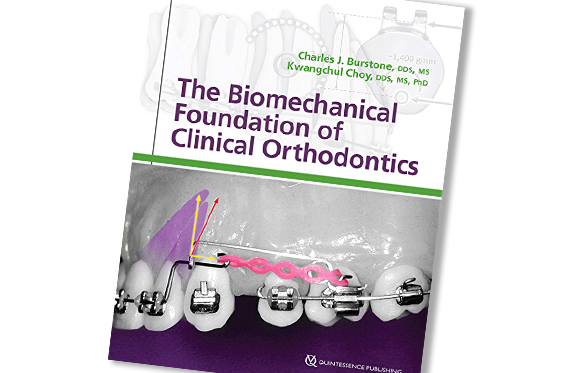I am currently in the middle of a fabulous biomechanics textbook. I have been looking to read it for quite a while and so far all my expectations met.
The Biomechanical Foundation of Clinical Orthodontics is a consummate guide to clinically relevant orthodontic mechanics put together by ten contributors. The major part of the chapters is written by two well-known gurus in the area: Charles Burstone and Kwangchul Choy.

The protagonist of the book is an orthodontic force. It is thoroughly explored in all of its clinical applications. The authors did a great jobs illustrating the directions, moments and magnitudes of the commonly used orthodontic mechanics. Desirable and undesirable effects are accurately weighted up and discussed.
There are separate chapters on the application of intermaxillary elastics, intrusion arches, lingual arches, the biomechanics of TADs and space closure. There is certainly no shortage in colourful schemes and photographs.
Most of the chapters end up with a set of problems – graphical exercises on biomechanics a reader should solve. I absolutely like the idea – this makes the book interactive and especially useful. After spending some time solving these puzzles you can go to the end of the book and check the solutions – they also are presented in pictures with short verbal explanations.
I think the book would be an invaluable resource for last year residents and young clinicians – it will help them to detect and correct biomechanical errors we all occasionally do and just broaden the understanding of what is possible to achieve properly utilising a simple yet uniquely sophisticated agent – an orthodontic force.
It is a shame I haven’t read the book earlier in my career, but I am devouring it now with gusto and will soon come up with the second part of its review.
You can buy your copy of the book clicking this link. Please note: this is an affiliate Amazon link. Small bonuses I have from this helps me to support Orthodontic Grammar project, whereas you pay just a regular price and not a dime more.

I think this book is helpful for begners
LikeLike
I would disagree. The book covers very sophisticated biomechanics. Beginners should start with something simpler.
LikeLike
[…] you find the first part of the […]
LikeLike